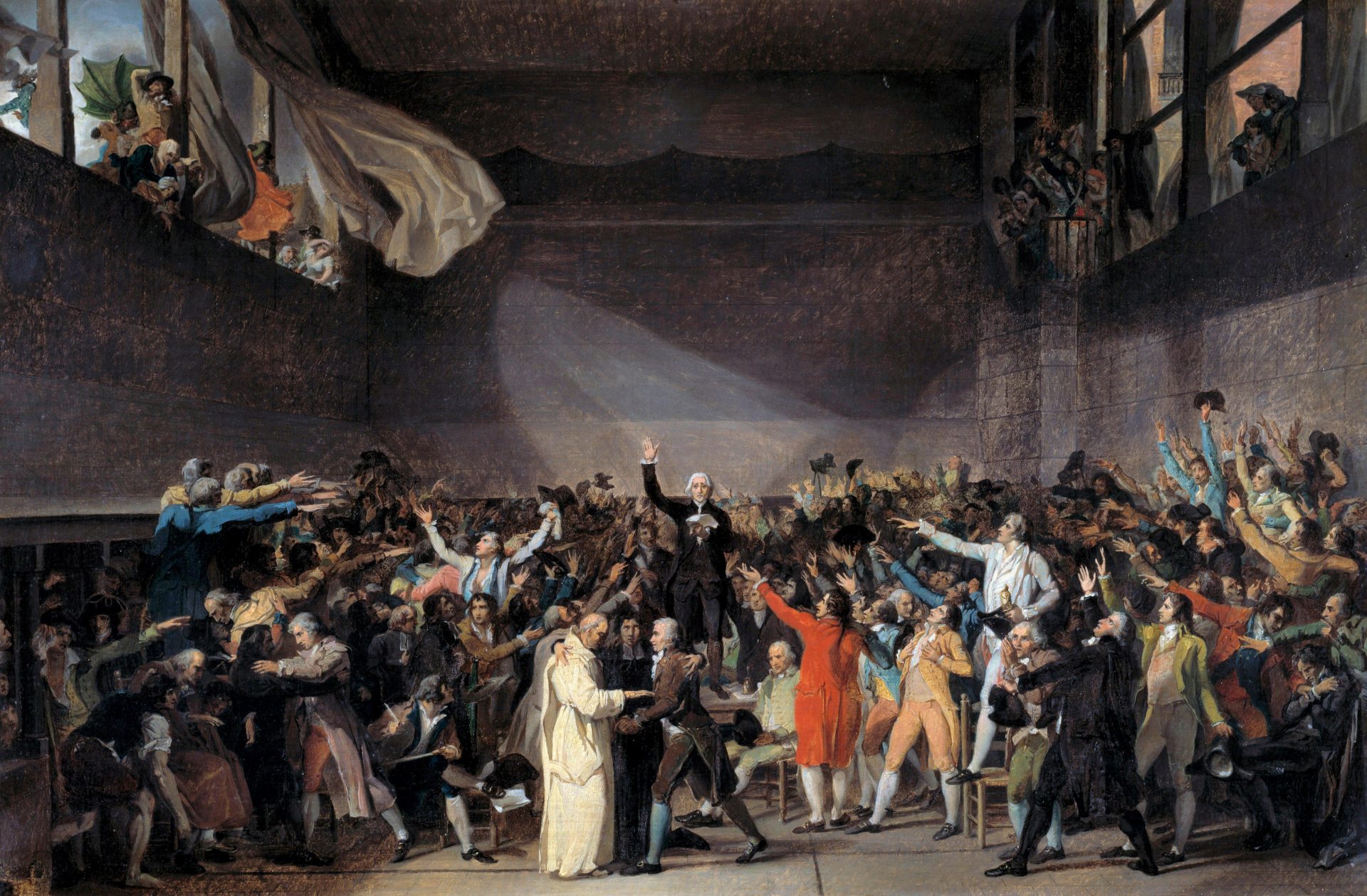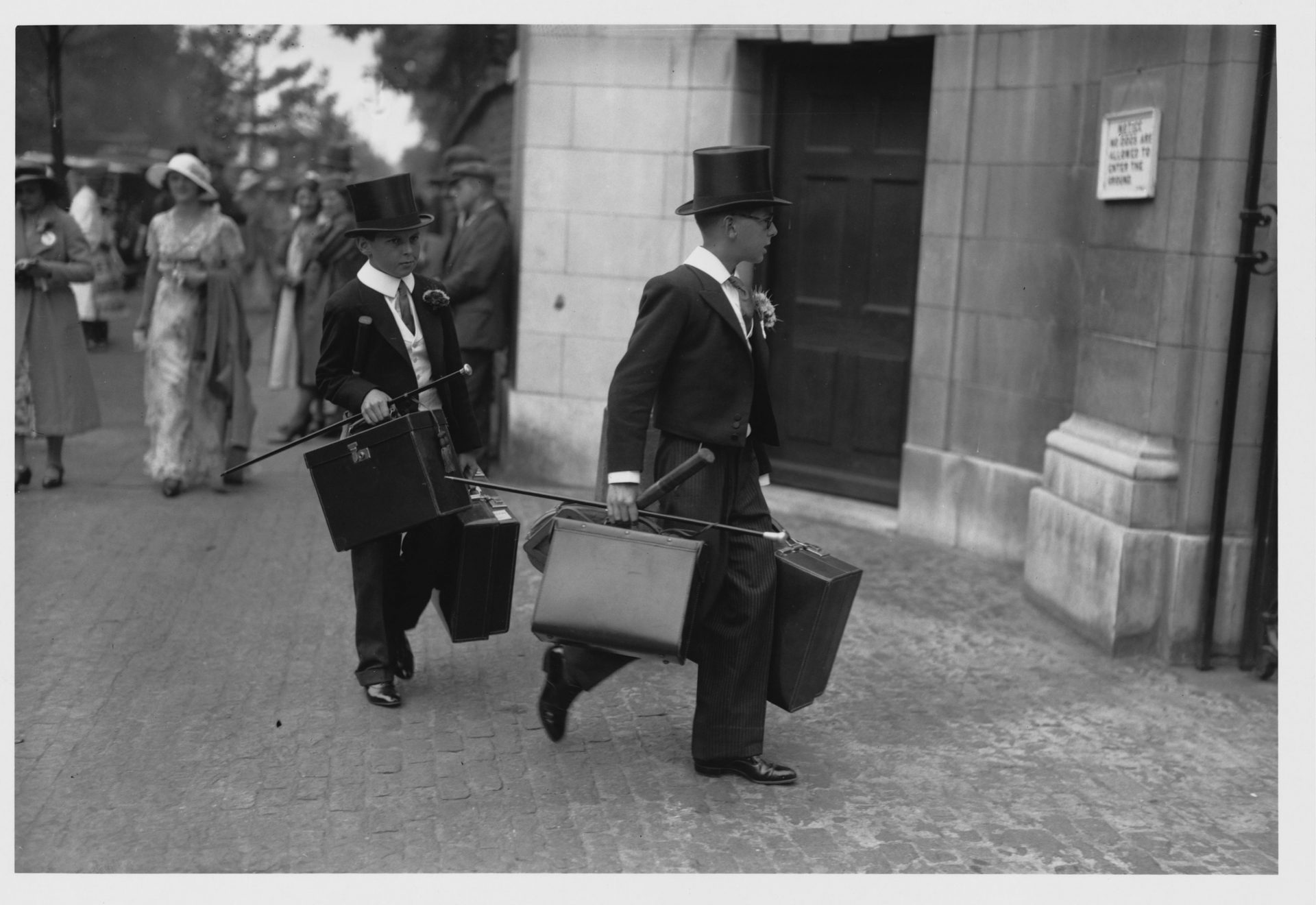Jacques-Louis David never completed the painting he’d planned of Serment du Jeu de Paume, (The Tennis Court Oath). So fast did the political climate change that it became imprudent for the artist to be associated with some of the people in the scene before he’d converted the drawing he made into a work in oils. That sketch still provides arguably the most striking image of the entire French Revolution.
At its centre is 53-year-old Jean Sylvain Bailly, the leader of the National Assembly, solemn-faced, right arm raised and holding a piece of paper in his left hand. Bailly is almost completely still at the heart of a tumultuous gathering of people, most of whom are reaching their arms dramatically towards him.
The windows above the scene are open and curtains billow in, as if the wind of change is actually gusting through the room. It’s idealised for sure, but the drama David’s sketch portrays was very real: the first tangible statement of intent against the Ancien regime and the first step towards genuine societal and political change in France.
It was June 20, 1789, when Bailly, barely a month into his role as its leader, led the National Assembly to Versailles for the Estates-General, a meeting called by King Louis XVI to address the worsening food shortages and fiscal crisis that had combined to stoke the flames of revolutionary fervour. The crisis was bad enough for the monarch to concede to demands for the first Estates-General in 170 years, a summit involving the First Estate, the clergy, the Second Estate, made up of the nobility, and the Third Estate, representing everyone else but reorganised as the National Assembly.
The Estates-General represented an outrageously skewed balance of power but on that summer day in 1789 it was all there was. Yet even such restricted representation would still be denied Bailly and his delegates: when they arrived at the chamber where the meeting was to take place they found it locked and guarded by soldiers.
A furious Bailly led his 600-strong band of excluded deputies to the palace tennis court where he composed an oath promising that the assembly gathered there that day would not disband until a written constitution for France was in place.
To scenes of wild celebration, Bailly raised his right hand, just as in David’s drawing, read the oath aloud and became its first signatory. It was a moment of unity, one that brought together people of different classes, regions, religious denominations and political backgrounds, all helmed by one of France’s most remarkable scientific figures.
The French Revolution was as much an intellectual event as proletarian one. Men of science were at its heart: in the first election after the storming of the Bastille, 11 scientists would be elected to the National Assembly. Politics and social change were regarded as scientific processes, with Bailly himself writing: “Politics is a science and I think I have mastered it”.
As he raised his hand on the tennis court and declaimed the oath that morning Bailly had every reason to believe he was correct. A significant step forward had been taken that day towards liberté, egalité et fraternité, a moment of unity and progress born out of reason rather than violence, one with a man of science at its core.
A month after the oath was struck Bailly became mayor of Paris and was re-elected the following year.
Even by then the united front he’d personified on the tennis court had all but evaporated as fissures developed between factions over the best way forward. Bailly did his best to hold everything together but the events of July 17, 1791, showed that dispassionate decisions based in scientific reasoning had their limitations when it came to governing actual individuals with all their quirks, flaws, different temperaments and differing opinions.
The National Assembly had announced on July 15 that, despite a recent attempt to flee France with his family, King Louis XVI would remain in place as monarch as part of a constitutional monarchy. In response French republicans organised a protest at the Champs des Mars in the centre of Paris that attracted 50,000 people. Bailly declared martial law in response and sent in the National Guard, who opened fire on the gathering, killing up to 50 people.
Republicans were understandably appalled by this act of governmental repression and the outcry led to Bailly resigning and eventually fleeing Paris for Nantes.
In the summer of 1793 he was arrested, taken back to the capital, deposed as a prosecution witness at the trial of Marie Antoinette whom he refused to condemn, put on trial by the Revolutionary Tribunal and sentenced to death.
It was a freezing, wet November morning when Bailly was paraded through the streets, hands tied, dressed in shirtsleeves and soaked to the skin. For three hours he was humiliated and abused by angry crowds, spat at and struck by missiles. Yet for all the degradation he endured in his final hours, Bailly went to the guillotine with as much dignity as he could muster.
“You are trembling, Bailly,” sneered one of the guards as the former mayor was finally led to the guillotine. “Yes, my friend,” he replied, rain, filth and blood streaking down his face. “Because of the cold.”
If he hadn’t misidentified politics as a science just like any other, Bailly could have lived a much quieter life of notable achievement. Until becoming involved with the revolution it was the sky that occupied him most. Through his telescopes he observed the ordered workings of the universe and the rhythms of the stars, peering ever further into the heavens, deeper into the night. He wrote extensively on the four satellites of Jupiter that were known at the time, and in 1759 as Halley’s Comet fizzed silently across the night sky, Bailly calculated the extent and arc of its orbit.
Only the second person ever admitted to all three French academies – Sciences, Belle-Lettres et Inscriptions and the Académie Francaise – Bailly would have been remembered as an exceptional man even without his leading role in the revolution. The only major miscalculation of his life proved to be a fatal one: that a nation of people could be as regular and reliable in their actions in the face of scientific reasoning as the distant, silent spheres of the heavens.




